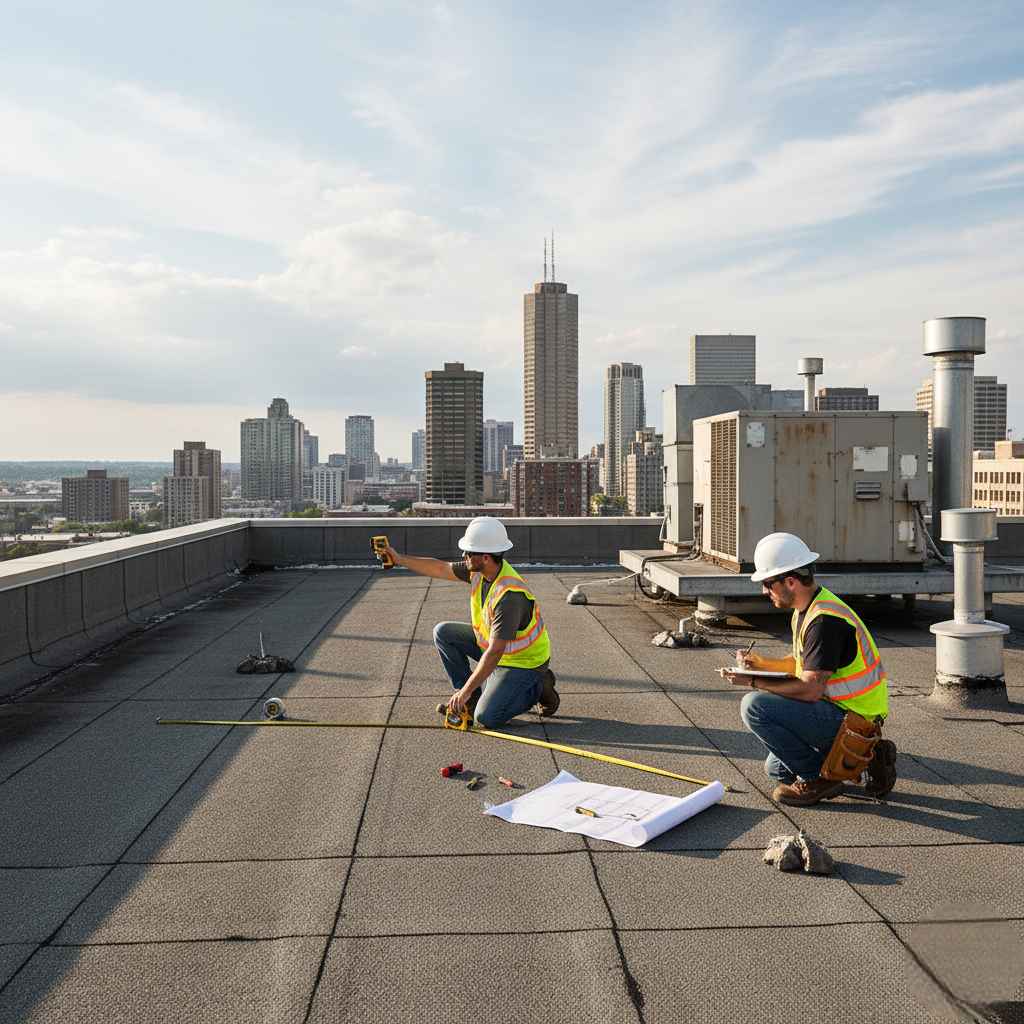Accurate rooftop measurements are the backbone of every successful roofing project. Whether you are estimating, creating material lists, or just making sure the install is going smoothly, you will need to take measurements effortlessly accurate, as that its what will have the greatest impact on the quality of the work and the overall cost of the project. This guide will provide seven tips that have been proven useful for seamless measuring on rooftops, improving productivity, and enhancing your professional reputation.
Table of Contents
7 Proven Tips:-
1. Master Roofing Terminology for Accurate Rooftop Measurements
Before you begin measuring, you should be familiarized with some important roofing terminology. It is obvious that proper communication is the beginning of accurate measuring and full understanding of your various roofing parts.
Important terms to know are:
- Eaves – The lower edges of the roof that extend beyond the walls.
- Ridge – The high point or horizontal line where two roof planes meet each other.
- Valleys – The inward angle formed where two roof sections meet.
- Hips – The outward angle of a sloped roof plane when two planes meet.
- Pitch/Slope – The degree of the slope of the roof, usually given as rise over run.
Understanding the meaning of these basic terms will only help you make accurate measurements of the roof and keep you from losing some time and money by making a possible mistake on your measurements in the future.
2. Use Satellite and Aerial Tools for High-Precision Measurements
Advancements in technology have changed how roofing experts measure roofs. Aerial measurement tools—powered by LiDAR and satellite images—provide accuracy and efficiency superior to manual measurement.
Advantages consist of:
- Less time in the field
- Accurate pitch detection
- Consistent measurements without regard to weather conditions
- Reduced number of rooftop visits for safety
The roof measurement software platform automates the entire process and allows effortless and timely reports for any measurement protocol.
3. Verify Roof Pitch Correctly for Precise Calculations
Pitch has an impact on all aspects from quantity of materials to complexity of installation. Even a small misstep can lead to a larger discrepancy in your final measurement.
Give these a try:
- Digital pitch finders to get real time measurements.
- Pitch charts using visual or mathematical references.
- Apps for smartphones that have angle detection capabilities.
Measure pitch before calculating square footage to inspect that your rooftop measurements are accurate and consistent.
4. Create a Detailed Sketch Before Measuring
A thorough sketch guarantees you do not miss any important measurements. Even with sophisticated equipment, a visual drawing brings extra clarity.
Something to include in your sketch:
- All roof areas.
- Hips, valleys, and dormers.
- Measurements for each roof plane.
- Notes on obstruction like chimneys or skylights.
Your sketch becomes your guide, so you make a record of all the appropriate dimensions and do not underestimate or overestimate your materials.
5. Measure Each Roof Plane Individually
Roofs don’t typically have straightforward shapes; they usually display several slopes and intersections. Measuring each plane independently is the best way to get the most accurate measurement, especially for:
- Multi-level complex roofs
- Roofs with strange pitch variations
- Houses with architectural features
Break the structure into simple geometric shapes, such as rectangles, triangles, and/or trapezoids. Calculate each area separately then combine that measurement for the final.
6. Always Account for Waste Factors
Every roofing project will create some level of material waste; typically, this is related to making cuts, starter courses, ridge caps, or installation mistakes. It is best to include a waste percentage in your quantities to prevent shortages.
Waste factors will generally fall into the following ranges:
- 5% for simple roof designs
- 8-10% for mid-complexity roofs
- 12-15% for highly complex buildings
Waste is highly variable based on the design, pitch, and type of roofing material. By including accurate waste percentages, your estimates will be more representative of onsite needs.
7. Double-Check All Measurements to Avoid Costly Errors
Even seasoned professionals know the importance of reviewing their own work. A quick review will avoid costly mistakes and build confidence with your client.
Double-check:
- All measurements of roof planes
- All pitch values
- All total area calculations
- All material estimates
- Any software-generated documents
When “accuracy is key”, the review process provides the last chance to prevent mistakes.
Benefits of Accurate Rooftop Measurements

Accurate measurements provide many benefits including,
- Controlling costs for clients and contractor
- The ability to order the right amount of materials, eliminating waste
- Efficient planning and scheduling of labor.
- Professional and trustworthy estimates
- Increased customer trust and satisfaction
When accuracy improves your performance improves as well.
Common Mistakes to Avoid During Rooftop Measurements
Even the tiniest of errors can result in excessive pricing, underestimated, or repeat work. Here are some possibilities of what not to do:

- Not assessing the pitch of the roof
- Not taking dormers, skylights, or add-ons into consideration
- Not measuring for waste
- Using outdated or blurry images
- Only measuring from a ground view
- Not checking the final products
If roofing professionals steer clear of these factors, they should be able to produce quality rooftop measurements consistently.
Why Professional Rooftop Measurement Services Matter
Although the ability to manually measure roofs effectively is an important skill for contractors to have, professional roof measurement services can save you a lot of time with superior accuracy and efficiency. These services can provide you with:
- High-resolution measurements
- Fast turnaround times
- Consistent reports
- Minimized liability and risk
- Stronger client proposals
In summary, professional programs that provide measurements save you time and ultimately give you confidence and certainty in your estimates.
Final Thoughts
Accurate measurements of a roof are important for precision, performance and profitability. When you use these seven tried-and-true techniques—leveraging technology, checking roof pitch, sectioning off roof areas and checking your measurements twice—you will form reliable results that will enhance your reputation and your business every time.
FAQs
1. What does ‘rooftop measurements’ mean?
Rooftop measurements simply means measuring a roof’s dimensions, roof pitch, and total area required to estimate the quantity of material and budget for projects.
2. Why is it important to have accurate roof measurements?
It is good to have accurate measurements to avoid costly material shortages, limits material waste, saves money, and ensures a well-fitted installation.
3. Can I get rooftop measurements without going on the roof?
Yes, we can quickly measure roofs from the ground using aerial/satellite tools, measurement software, or satellite imagery.
4. How do I calculate the pitch of a roof?
You can calculate roof pitch by using a digital pitch finder, smartphone app, or level and measuring tape, and calculating rise over run.
5. What tools are the best for rooftop measurements?
If you want the best possible accuracy, use satellite measurement tools, laser distance measures, or roofing software.


